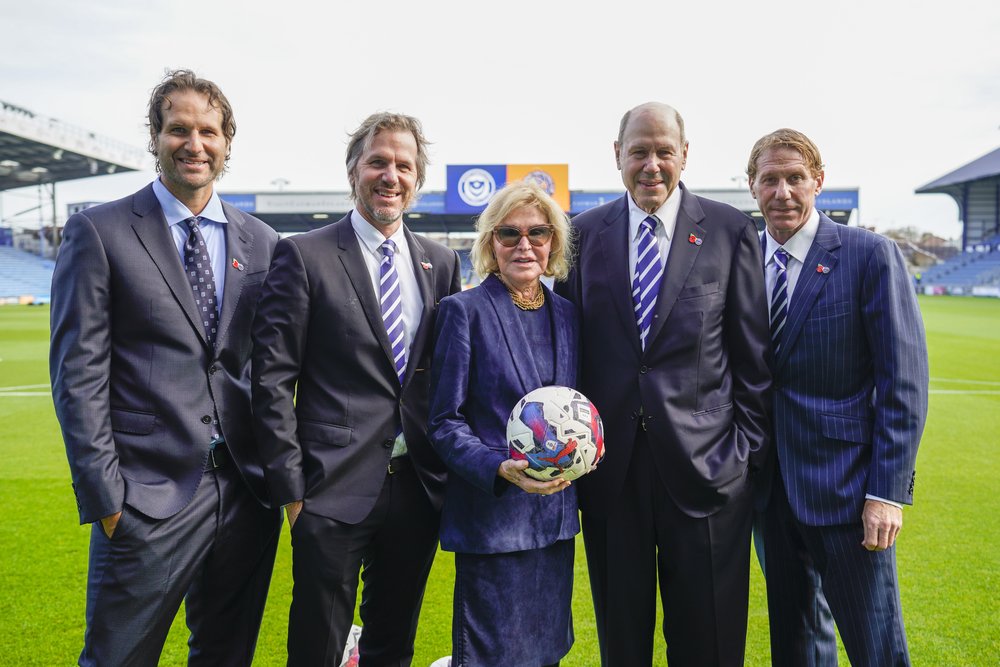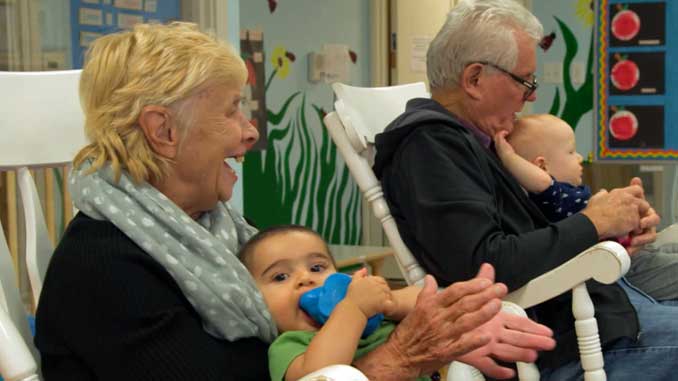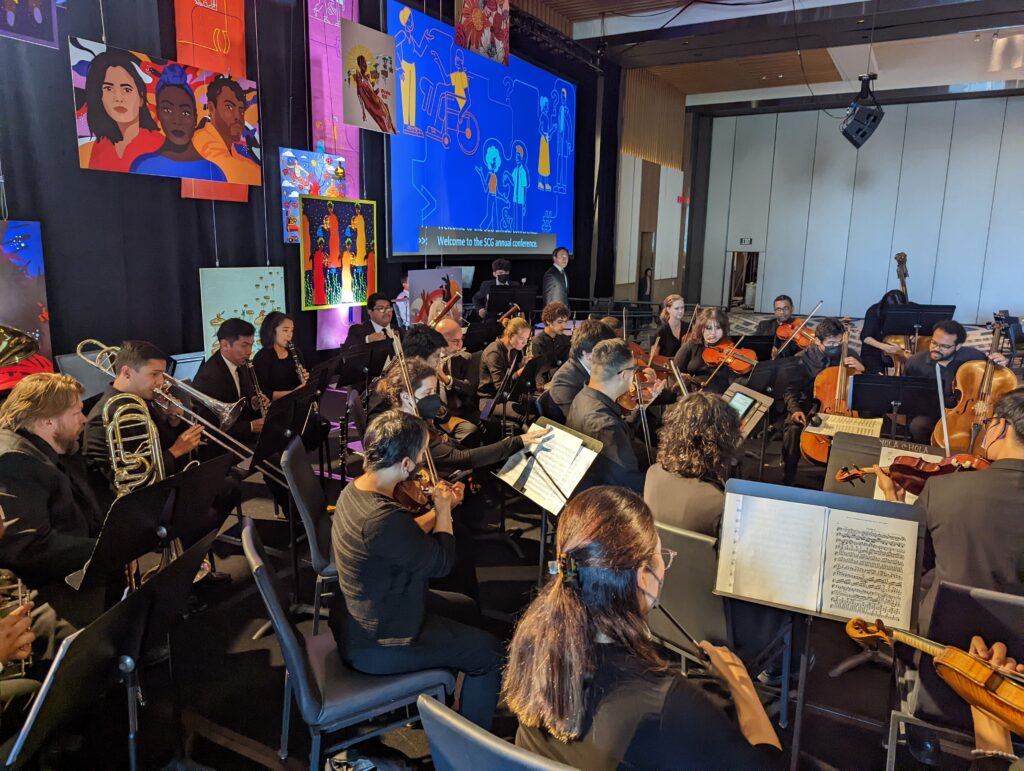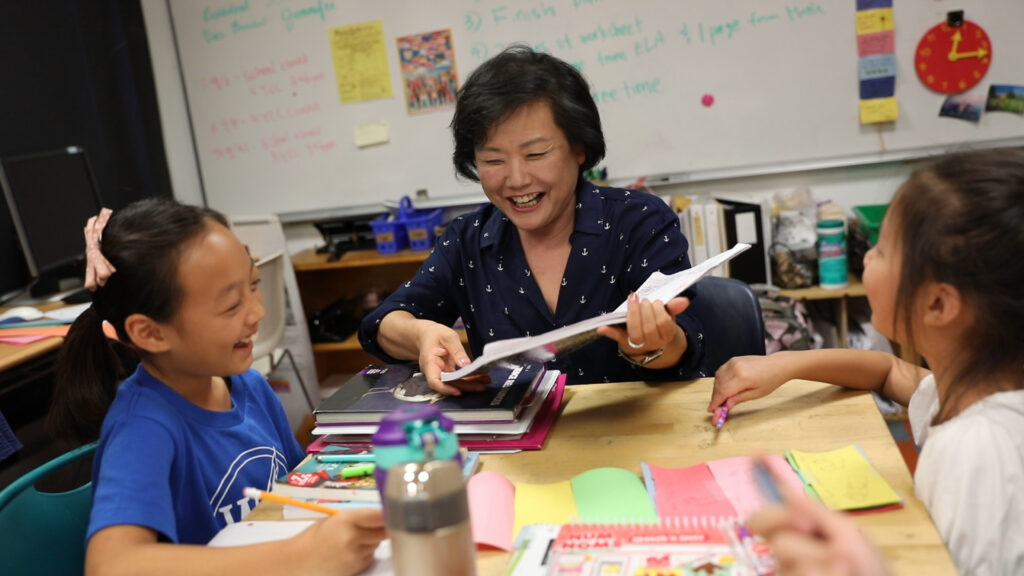Effective Family Philanthropy: The Eisner Foundation

Portsmouth Director Michael Eisner and Portsmouth Director Eric Eisner during the EFL Sky Bet League 1 match between Portsmouth and Shrewsbury Town at Fratton Park, Portsmouth, England on 29 October 2022.
The Intergenerational Philanthropy of the Eisner Foundation
If there were a Disney film about family philanthropy, it might open with a scene from Michael Eisner’s childhood. The L.A.-based philanthropist, former chairman and CEO of the Walt Disney Company and former head of Paramount Studios before that, grew up sitting in on conversations about family giving during Thanksgiving in Vermont. After the big meal, his parents, aunts and uncles would call all five grandchildren into the living room for the quarterly planning session of the Dammann Foundation, the family foundation started by his maternal grandfather and run, at the time, by his parents’ generation.
“It was a command performance after a big turkey dinner,” Eisner said, speaking by Zoom from L.A. “It was between fall foliage and snow, so it was a little brown, though occasionally it would snow. My uncle and parents would go through all the suggested donations and strategies of the individual families, and follow up on donations, asking, ‘What do you all think?’ It went on for a couple of hours, with 10 or 12 or 14 people. How old we were at the time meant whether we were restless or wanted to go out and play touch football.”
Eisner and his wife, Jane, now both 80, have continued that tradition of philanthropy, and of including the whole family in it. They formed the Eisner Foundation in 1996, drawing upon their own funds and a portion of the Damman money once that foundation wound down. The Eisners’ three adult sons, Breck, Eric and Anders, serve as the other board members, and the plan is for the sons, and eventually their nine children, to carry the foundation forward.
Today, with more than $170 million in assets, the Eisner Foundation combines the family’s generations-old philanthropic know-how with contemporary Hollywood wealth, using its heft to tackle one the most under-resourced challenges facing America today — our aging society. And just as the foundation’s leadership spans generations, so does its grantmaking; Eisner is one of few foundations dedicated solely to intergenerational programs, those that focus on cross-generational connection and support.
The backstory: More than a century of family giving meets Hollywood wealth
You may feel like you kind of know Michael Eisner, even if you’ve never met him. His larger-than-life entertainment industry career included running the Walt Disney Company during the late 1980s and 1990s, when the home of Mickey Mouse expanded its holdings and began once again turning out some of the most exciting animated films of its day: “The Little Mermaid,” “Beauty and the Beast,” “Aladdin” and “The Lion King.” He came to Disney from Paramount, which he’d led when that studio produced pretty much everything anyone wanted to see (at least, anyone of my generation, which is also that of the Eisners’ oldest son, Breck). Paramount released now-classics such as “Saturday Night Fever,” “Grease,” “Raiders of the Lost Ark,” “An Officer and a Gentleman” and “Flashdance.” In the early 2000s, Eisner was also in the news for some pretty public feuds with former associates, including Jeffrey Katzenberg. He stepped down as CEO of Disney in 2005.
Long before Eisner made a fortune in film, his ancestors were succeeding in business in the U.S., and using their earnings to give back. Not only was his maternal grandfather, Milton Dammann, president of American Safety Razor, a philanthropist, so was his paternal great-grandfather, Sigmund Eisner. Sigmund founded the Sigmund Eisner Company in Red Bank, New Jersey, the largest uniform manufacturer in the country in its time and the maker of Boy Scouts uniforms. He, too, was an active giver, in his case, largely to children’s causes.
Jane Eisner did not grow up with this family tradition, but in 50-plus years of marriage to Michael, she has developed her own philanthropic acumen, serving as the president of the Eisner Foundation, and currently the most involved family member.
Just as gathering for Thanksgiving is a national tradition, Michael sees philanthropy as another quintessentially American activity — and not one dependent on old family money. “There are people who came over last week who are philanthropic. Tithing is philanthropy. Giving to the Salvation Army is philanthropy. It’s what Americans do.”
Well, not all Americans. As we have written before, more money has been made in Hollywood in recent years than ever before, due to globalization and technology. Yet, there are not as many entertainment industry philanthropists as there could be, even as winners in this world wield tremendous economic power. And many who do give aren’t very systematic in their approach. Among Hollywood’s existing “glitzy givers,” Michael and Jane Eisner are unusual for the way they’ve built a professionalized and innovative foundation. But getting to that state took some time.
Act one: Combining family tradition with new approaches

ONEgeneration is an intergenerational shared site that hosts a childcare/preschool on the same campus as a senior day facility. The two groups come together throughout the day for structured activities, giving the children experience with older adults and people with disabilities early in their lives, and giving the older adults a sense of purpose and joy. Here, two older adults play with children in the childcare program. ONEgeneration was the 2022 winner of the Eisner Prize for Intergenerational Excellence.
In the late 1990s, the Eisner Foundation began by focusing on nonprofits aiding children, a natural fit for a philanthropy headed by a family-oriented entertainment mogul and the parents of three young children. At first, the foundation gave in a somewhat casual way, as the Dammann Foundation had. There was a single, part-time employee. “Our goal had been low cost, very little money spent on the foundation, all of it spent giving it away. My dad was obsessed with that,” said Breck Eisner, speaking by Zoom from his L.A. office (where movie posters were visible on the wall behind him).
But the new Eisner Foundation had a lot more money to give than the old Dammann Foundation, and through wise investing, more all the time. That’s a big responsibility, said Breck. They realized they could have more impact if they professionalized what they were doing. “It’s a business, right? In order to best manage your ‘product,’ which is giving, you need to spend enough to get the best people and to best deploy the money you have. It’s taken us a full decade to figure that piece out,” Breck said.
The elder Eisners consulted with Joel Fleishman at Duke, who Michael described as “the most learned educator in philanthropy in the country.” In 2008, partly through Fleishman’s guidance, the foundation hired Trent Stamp as CEO. Stamp had been a program fellow at the Social Security Administration, a teacher and VP of communications for Teach for America, and the president of the then-fledgling nonprofit rating service Charity Navigator. He brought with him experience with older adults and with children, and a deep knowledge of organizational efficiency.
Stamp also brought a new clarity of focus. “I asked the question: ‘Why are we giving to kids? Is it because kids are cute, or because they often lack access and power?’ If the answer is the latter, maybe we should add seniors, too, because they are also vulnerable people.”
The Eisners agreed. Jane and Michael were growing older themselves and seeing the challenges facing our aging nation all around them. With Stamp on board, the Eisner Foundation began routing about 20% of its annual funding to aging-focused groups.
Act two: The move toward intergenerational programming
The most effective programs for older adults, it turns out, are intergenerational ones — activities that bring older and younger people together, often to solve problems that affect each, such as combating isolation of older folks by having them help kids improve their reading skills. Intergenerational programs allow a funder to serve two populations with every dollar, as we’ve written before when covering the Eisner-funded Heart of Los Angeles Intergenerational Orchestra. The economic crisis of 2008 meant the Eisner Foundation had less money to spend, which made the two-for-one nature of intergenerational funding particularly appealing.

HOLA Eisner Intergenerational Orchestra: The orchestra performs at a conference in Los Angeles. These musicians are aged 14-75 and regularly perform together across the Los Angeles area.
Bringing people of different generations together for creative, positive interaction is also a great workaround in an era of intensifying polarization. Many divides today seem impossible to overcome. The generation gap? It’s relatively easy to bridge. Carving out a niche also allowed the relatively small foundation to take a leadership role, to “punch above our weight,” said Stamp.
In 2015, the foundation refined its focus to specifically fund intergenerational programs. Today, the Eisner Foundation is the leader in this space and the only major philanthropy dedicated to intergenerational funding. Like so many decisions before, this pivot is aligned with the family itself, now living a close, intergenerational reality itself.
“It’s a union between two populations who are isolated and do not have a lot of people advocating for them. We have an aging country. It really is important,” said Michael Eisner, who hopes his foundation’s intergenerational focus will lead other foundations to follow suit.
While the majority of the foundation’s grantmaking is in Los Angeles County, it expanded to New York City at the end of 2021, giving more than $1.5 million to NYC organizations doing intergenerational work that year. Grants typically range from $25,000 to $300,000. Recipients include organizations such as CoGenerate (formerly Encore.org), Generations United, the Los Angeles LGBT Center, Heart of Los Angeles, Bet Tzedek, L.A. Works, and ONEgeneration.
Marc Freedman is co-founder of CoGenerate, a longtime Eisner Foundation grantee. He said that the foundation’s ongoing support through unrestricted and program-specific grants, as well as thought leadership and partnership, has helped the nonprofit flourish. “They are really good at seeing and supporting us and nudging us to go further, to move to the next challenge and be adventurous in doing so. In the grants they’ve given us, they’ve asked us to put a special emphasis on what generations can do together. That led us to reinvent ourselves as an organization to CoGenerate. We were interested in this and then Eisner’s funding gave it more legitimacy and impetus.”
One of the foundation’s signature projects, the Eisner Prize for Intergenerational Excellence, is an example of the fund’s savvy. By creating this prize, the foundation not only generates more excitement and activity around intergenerational programming, but also expands its own knowledge of what’s happening throughout the country. “That was the strategy,” said Michael Eisner. “By doing the prize, we’ve now seen what happens in Illinois or Ohio. Occasionally, there are really good things, and then we bring them here.”
Act three: Preparing the next generation of family givers
The Eisner Foundation board meets quarterly to go over their giving, much as the earlier generations of the family did in Vermont, though not necessarily during holidays. Breck’s wife, Georgia, Eric’s wife, Stacey, and Anders’ wife, Terena, play key roles as advisors. While board members theoretically have an equal say, Breck said that he and his siblings defer to their parents. “My parents are strong heads-of-company. We all meet and have votes, but we are very respectful of what my parents want. At some point, when they’re gone and we’re the heads, the hope is to keep the foundation together.”
To this aim, the five Eisners worked with Stamp during COVID to create a comprehensive mission statement detailing the kinds of organizations they fund and don’t fund, the intergenerational focus, and the best use of finances. Family members also have discretionary funds to spend as they see fit without board approval. This eliminates the need for time-wasting conversations about smaller gifts and allows everyone to feel free to give as they wish, another way to prevent friction and maintain commitment.
Of course, the long-term continuation of the foundation depends on the nine grandchildren — the sixth generation of Eisners engaged in family giving. Interestingly, Breck pointed to the broader cultural shift toward community service as part of how he and his wife are engaging their three children in understanding the value of philanthropy. The kids’ schools all require a certain number of community service hours, something not common when we were young.
“Georgia and I have thought a lot about our children’s involvement in giving and how we should engage that in the Eisner Foundation. The philosophy has been to make sure they are exposed to working in the community and to the needs in L.A.,” he said. “If you just sit in the conference room talking about the organization, it’s so disconnected from what people are doing. It’s crucial to have the site visits and see what the organizations do and who’s running them and the incredible people involved.”
Breck’s family recently went to Tijuana with a handful of other families to build a house for someone who was living in a car. “My eight-year-old had a nail gun. My 12-year-old was on the roof. They feel like they built that house. I think it’s important for them to understand, when they’re young, what the results are of the money, what the needs are, what you’re doing.”
Their oldest son, Noah, at 14, is the oldest of the grandchildren, and about the right age to bring into the family philanthropy meetings, Breck said. This approach of hands-on doing first differs from Michael Eisner’s “fly-on-the-wall” experience of sitting in family philanthropy meetings as a young child. It reflects the professionalization of the family foundation and also probably of the field of philanthropy and of the zeitgeist more generally.

The Koreatown Youth and Community Center (KYCC) has developed a range of intergenerational programs over the years, including their Koreatown Storytelling Program. Here, a volunteer reads with children in KYCC’s after-school program.
Epilogue
In Michael Eisner’s career in family entertainment, there was an idea (and an advertising campaign) that said, “the family that plays together stays together.” But the family that does anything together tends to stay together, he said, and giving together creates a particularly strong bond. “You’re working together to accomplish a goal. You have a communal mission. It’s a very good thing to do, not only for philanthropy, but for your own family.”
So if the Eisners had to come up with a catchy slogan for their generation-spanning philanthropic tradition, it might be something like, “The family that gives together stays together.”
